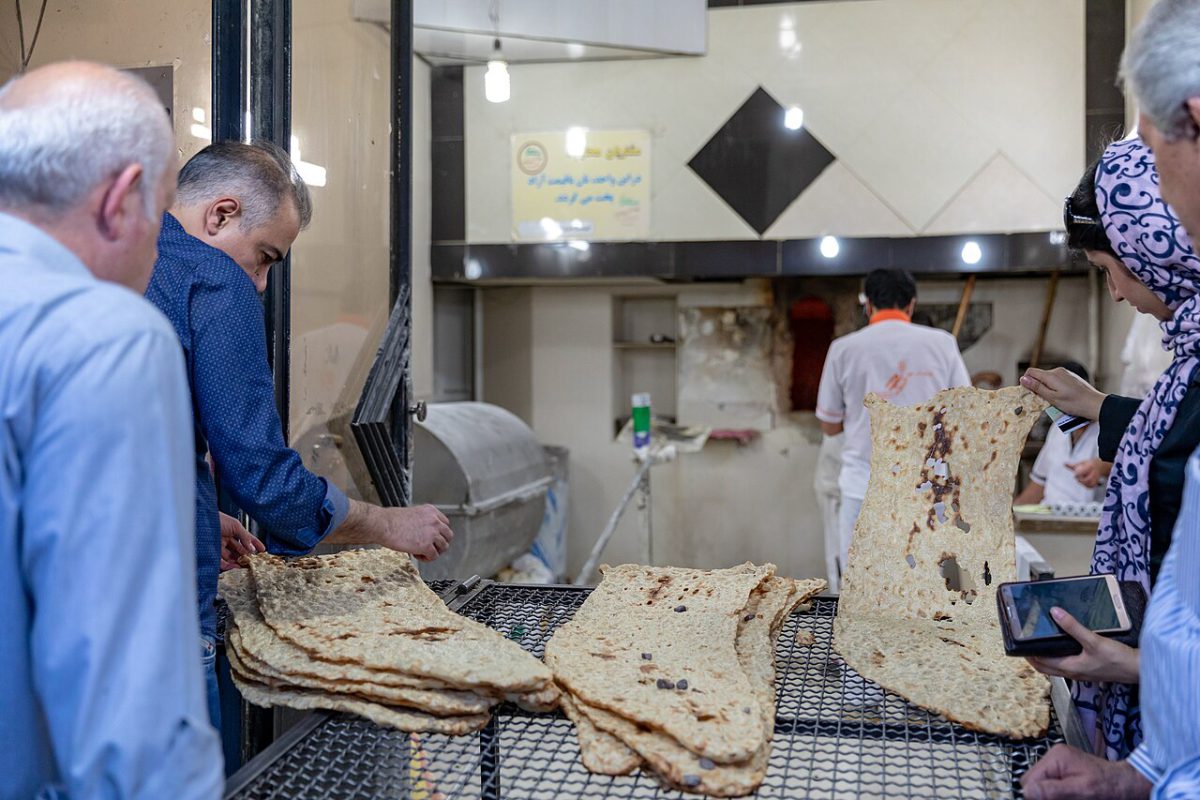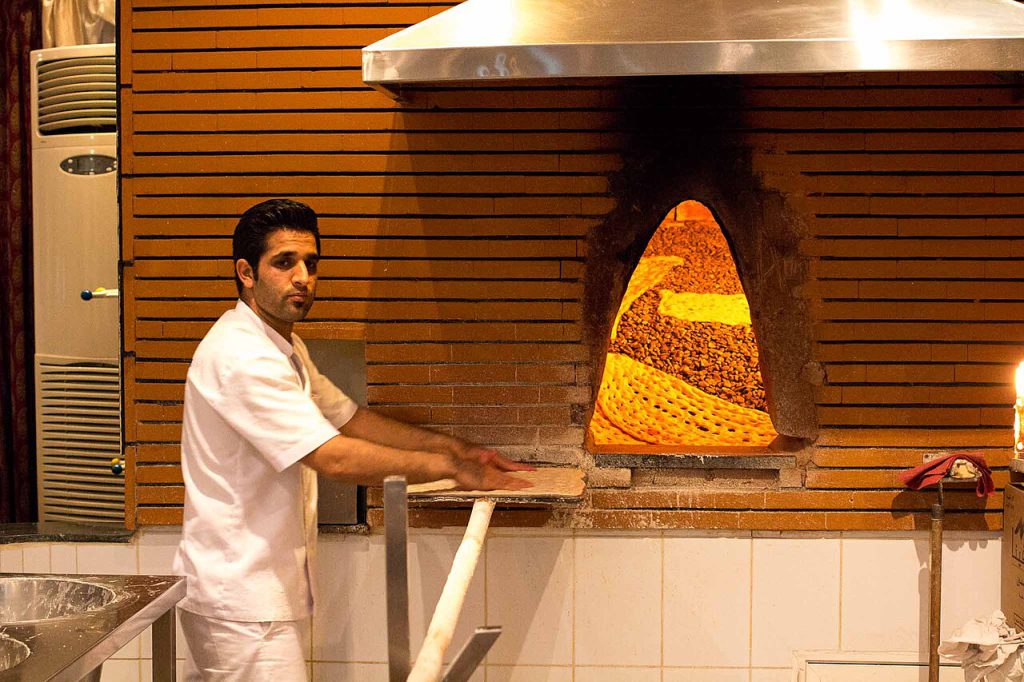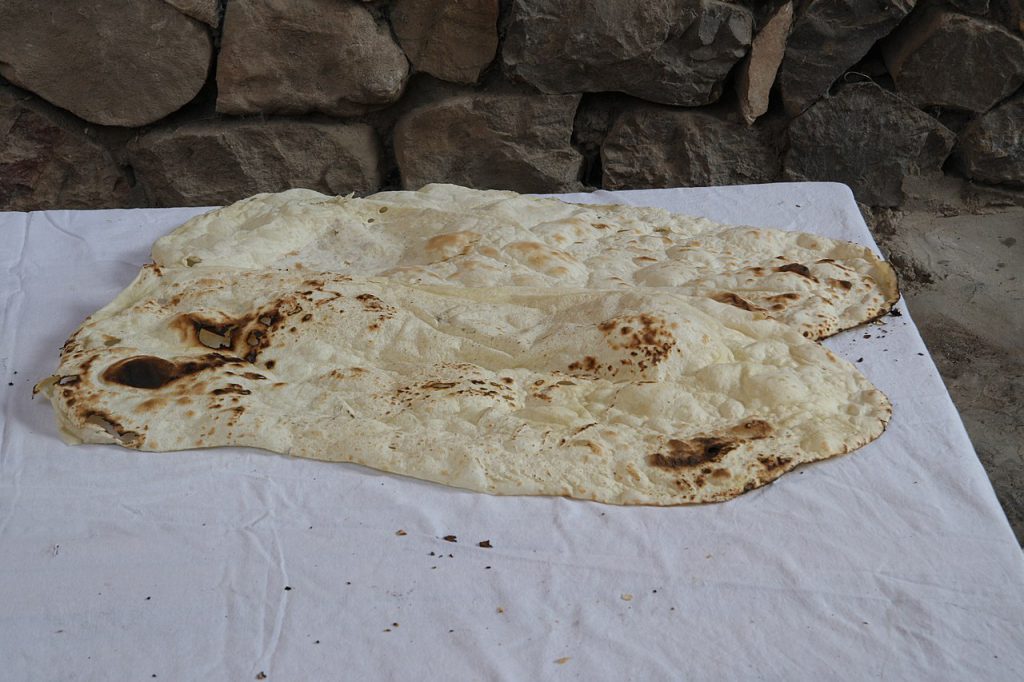Table of Contents
Deep within Iran history and culture lies a timeless tradition: making bread. Woven into everyday life, Persian bread holds a special place, symbolizing plenty and blessings. Across Iran, bread is more than just food; it’s an essential part of meals, especially Persian breakfast, from bustling cities to quiet villages. It’s a link to the past, a taste of tradition that connects generations.
Explore the story of Iranian bread, and you’ll find a journey through time. From simple Persian flatbreads to elaborate creations like lavash and sangak, each loaf carries the skill and care of generations. Eating Persian bread is like tasting history, a way to experience the flavors of ancient times.
So, take a bite and discover the unique taste of Iranian bread — it’s a journey you won’t forget.
Persian Bread History
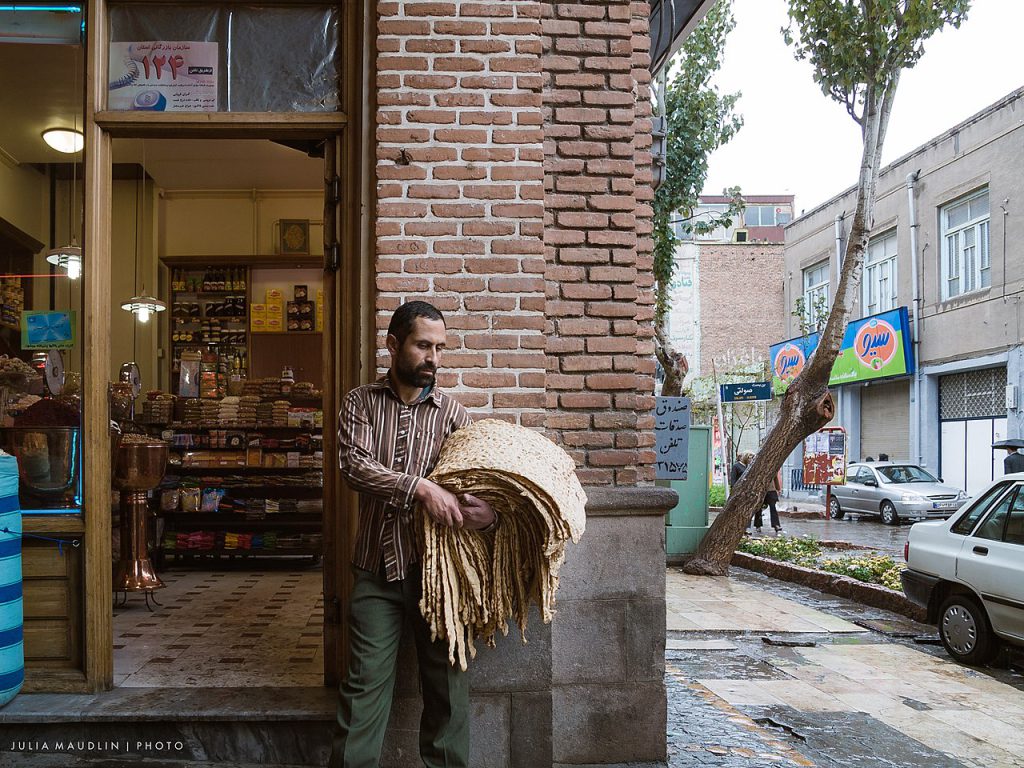
Persian bread has a long history, going back thousands of years. It all started with the Assyrians, who grew wheat and barley and made bread. Iranians have been enjoying wheat bread as their main food for ages. Evidence from Silk Hill, dating back around 3000 to 3200 years before now, shows that Iranians were baking bread using special ovens. Places like Jiroft and Kerman were known for growing wheat, and Iranians there came up with different ways to bake bread, using different types of ovens.
Iranian bread comes in many varieties, made from grains like wheat, barley, and rice. Each type of flour is mixed and baked in unique ways, showing the skill and tradition passed down through generations. Iranian bread tells a story of Iran’s history and culture, from ancient times to today.
Persian Bread in Farsi
In Farsi, Persian bread is called “Nan,” and it comes in many types, like Sangak, Barbari, Lavash, and Taftoon. You can find these breads in bakeries all over Iran, and they’re a big part of Iranian food. Each kind of bread has its own special taste and style, showing off Iran’s diverse culinary heritage.
So when you step into an Iranian bakery, the smell of freshly baked Nan invites you on a journey through Iran’s history and culture, one delicious bite at a time.
Persian Bread Oven
In the heart of Iranian bakeries lies a special treasure: the traditional Persian bread oven, or “Tanour” or “Tanoor.” Shaped like a big cylinder and usually made of clay or bricks, it’s like a cozy time machine to ancient baking days. What makes it really cool is the sloping shelf covered with stone where bakers gently place the dough to bake. This clever setup adds a unique taste and texture to the bread that you won’t find anywhere else.
To keep the fire burning, bakers use different things like wood or oil. But it’s not just about what fuels the fire—it’s about the stories passed down from generation to generation. As bakers skillfully handle the dough, they’re not just making bread; they’re sharing tales of family and tradition. In every delicious bite, the Tanour whispers stories of the past, inviting everyone to enjoy the magic of Persian cuisine.
Persian Bread Ingredients
At the core of Persian bread lies a mix of essential ingredients that give it its special flavor and texture. Water, oil, salt, and yeast dough form the base for many Iranian bread recipes. But what makes Persian bread stand out are the different kinds of flour used. Whether it’s hearty wheat, earthy barley, or refined white flour, each brings its own unique touch, creating a wonderful blend of flavors that dance in your mouth.
Digging deeper into Persian bread, you’ll find a variety of added flavors and decorations. Some types are sprinkled with sesame seeds, giving them a nice crunch and nutty smell. Others use black seeds or dried herbs like thyme or oregano to add a bold or fragrant taste. And if you’re craving something sweet, a bit of sugar can turn Iranian sweet bread into a delightful treat. Every bite of Persian bread tells a story of tradition and skill, inviting you to enjoy the rich flavors woven into its very essence.
Persian Bread Types
Sangak Bread
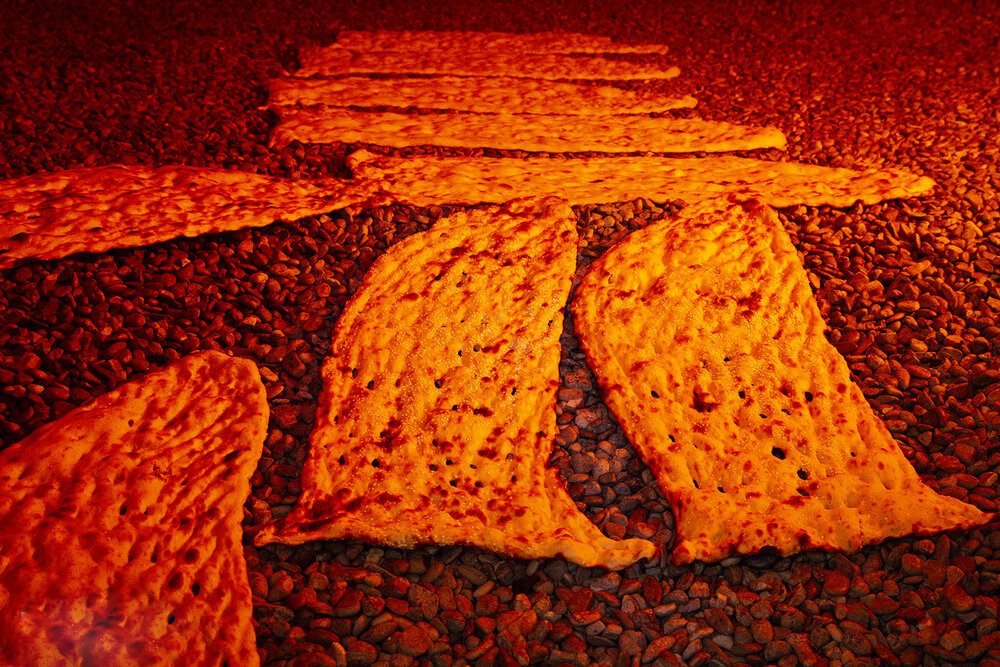
The fascinating world of Sangak Bread, with its unique flavor and baking technique, steals the show. The name “Sangak” comes from Farsi, meaning “little rocks” or “pebbles,” which perfectly describes the bread’s distinctiveness. Imagine dough carefully placed on hot pebbles, creating a charmingly uneven surface with cute little dents.
Visit a traditional Farsi bakery, called a Noonvaie, and you’ll witness the magic of Sangak firsthand. This bread isn’t just big; it’s huge, stretching about 3 feet long and 1 foot wide. But what’s even more interesting is what happens after baking. Persian bread Sangak is gently folded to make it easier to carry home for those eagerly awaiting its arrival. And here’s a fun fact: you might spot tiny pebbles stuck to the bread, reminding us of its rustic charm and the skilled hands behind its creation.
Barbari Bread
Picture a slice of Iran’s culinary history, and you’ll likely find Barbari Bread at its center. This flatbread, known as nan-e barbari, has its origins with the Barbars, a group from northeastern Iran who brought it to Tehran ages ago. Shaped into a long oval and brushed with a special flour glaze called roomal, Barbari Bread gets its signature airy texture inside and that lovely golden crust outside. It’s often sprinkled with poppy, nigella, or sesame seeds before baking in traditional tandoor ovens, filling the air with irresistible aroma.
Barbari isn’t just any bread; it’s the thickest among Persian flatbreads, measuring about 70 centimeters long and 20 to 25 centimeters wide. While it might not be the best choice for dieters or those with tummy troubles, Barbari shines brightest at breakfast. Slathered with butter, adorned with jam, or drizzled with honey, a warm slice of Barbari brings a taste of tradition and a glimpse into Iran’s culinary heritage to the morning table.
Lavash Bread
Lavash bread, the original flatbread that’s loved worldwide, has its roots in Persia. In Persian bakeries, you’ll find Lavash in long oval shapes, baked in clay ovens called tanoors. But at home, it’s easy to make smaller, round versions on a regular pan.
Eating Persian bread Lavash is a blend of tradition and modern flair. While some stick to the traditional way of enjoying it fresh from the tanoor, others use it in a more contemporary style, sometimes even as a replacement for utensils. In Iran, it’s common to see people eating without knives and forks, using Lavash to scoop up their food. With each bite, Persian bread Lavash brings not just a tasty meal, but a connection to our culinary past and the joy of sharing food together.
Taftoon Bread
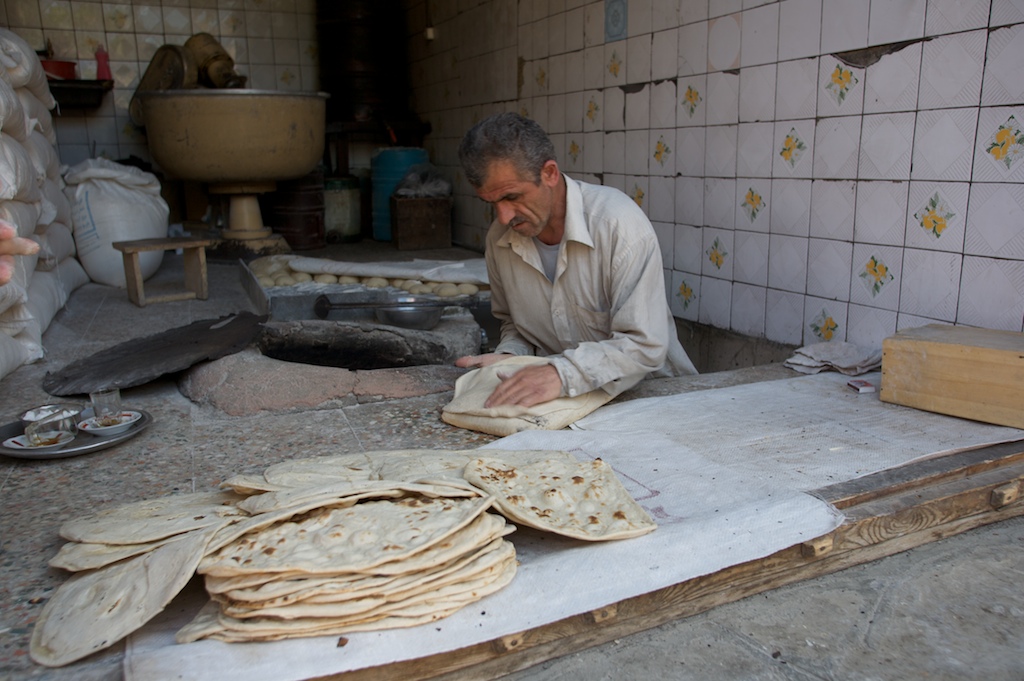
Taftoon, a popular bread in Iran, shines bright in Persian cooking. Different from Barbari bread, Taftoon doesn’t use baking soda. It’s made from whole wheat flour, milk, eggs, and yogurt, getting its name from the Persian word for heating or burning.
In old Persian stories, like the Shahnameh, Taftoon gets a mention as one of the earliest breads. Traditionally, it was baked in clay ovens, but now, people use rotary ovens or machines. Some areas add veggies, seeds, or bake it underground, creating special versions like Zanjani or Azeri Taftoon. You can enjoy Taftoon with almost anything, from cottage cheese to yummy kebabs wrapped in Taftoon or lavash, making it a must-try on an Iran food adventure.
FAQs about Persian Bread
Q1: What is Persian bread called?
A1: In Persian, bread is called Naan [nân]. Records from the Sassanid Empire in the 3rd century mention Persian naan, showing that Iranians have been making and eating bread since that time.
Q2: What is the most popular bread in Iran?
A2: Sangak, a thin, flat bread, is really popular in Iran. It’s actually seen as one of the main types of bread in Iranian cooking, almost like a national bread.
Q3: What kind of bread is Sangak?
A3: Sangak is a simple, rectangular or triangular flatbread from Iran made with whole wheat and leavened dough.
Q4: Why is it called Barbari bread?
A4: Before the reign of the first Pahlavi king, the Hazaras of Khorasan were known as Barbar. During Mohammad Reza Pahlavi’s rule, the term “Barbari” was replaced with “Khavari” by official order. However, the bread continued to be called “nān-e barbari” and is still known by that name in Iran today.
Q5: What is Persian flatbread called?
A5: Barbari bread, or Nan-e Barbari in Persian, is a type of flatbread made with yeast. Before baking, it’s coated with a glaze and sprinkled with sesame and nigella seeds. This glaze not only gives Barbari its golden-brown color but also adds a nutty flavor, reminiscent of a pretzel.
Last Words: Experience the Best of Persian Bread with a Customized Tour
In Iran, making bread is a really old tradition. People all over Iran, whether they live in busy cities or quiet villages, eat bread with their meals. It’s a way to remember the past and connect with different generations. The story of Iranian bread is like going back in time. There are lots of kinds, from simple flatbreads to fancier ones like Lavash and Sangak. Each loaf shows the skill and love passed down through families. Eating Persian bread is like tasting history. So, try some Iranian bread and enjoy its special flavors — it’s a journey you’ll remember.
To truly enjoy the deliciousness of Persian bread, your best bet is to visit Iran and experience it firsthand. Iran has lots of tours you can join, but the best ones let you pick what you want to do. That’s where Customized Tours come in. To Iran Tour is a company that specializes in making these kinds of trips happen. They know all the best spots to find delicious bread and can set up cool experiences like visiting busy markets or even learning how to make bread yourself.
Let’s go on a delicious journey together and discover the magic of Persian bread!

